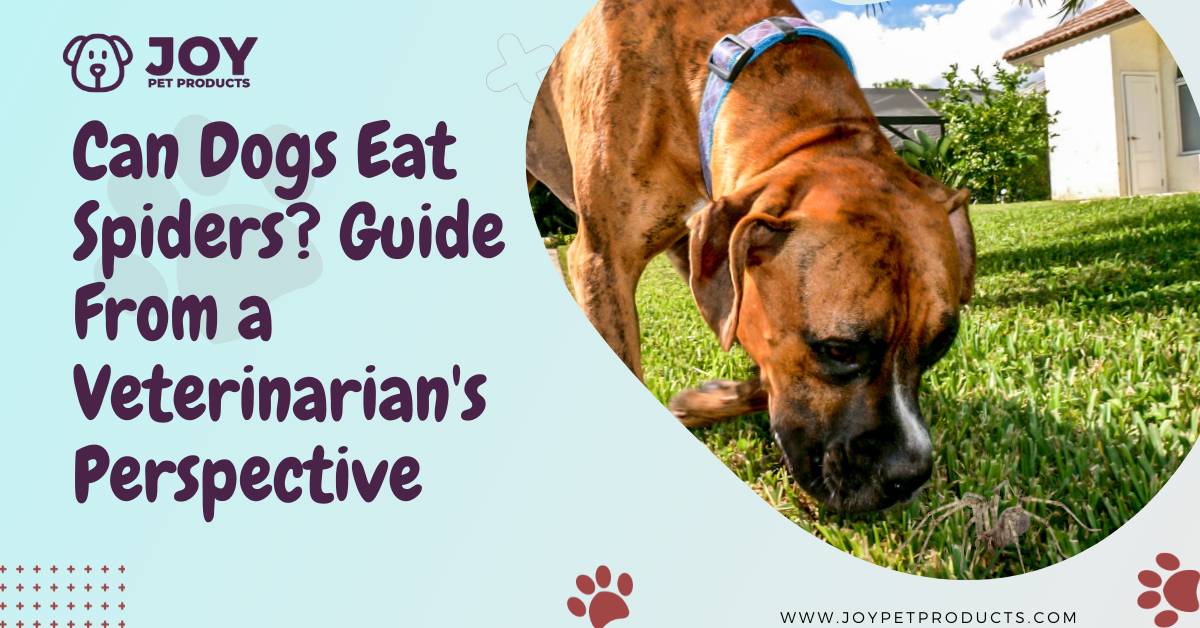It’s no unknown fact that dogs are curious beings interested in exploring their surroundings. It could be anything from twigs and grasses to your shoes or even the spiders and bugs wandering in your garden.
As an owner, all hell may break loose on you if you find your dog munching on dead spiders lying in the yard.
Could you identify the spider? Was it the deadly brown recluse or funnel web? Or, was it the non-venomous ones, like those of the jumping spider family?
Whatever may be the fact that your dog ate a spider will stress you to the core. Let’s look into the facts regarding your dog eating a spider and the associated consequence.
Can Dogs Eat Spiders?
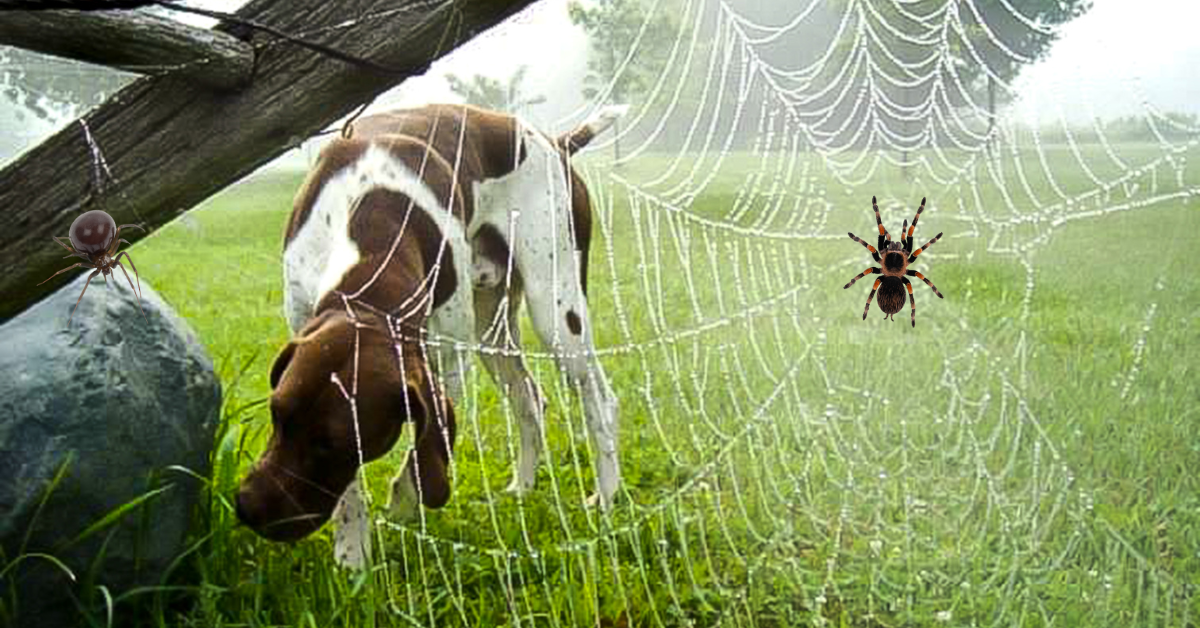
It is a little difficult to answer this question with a YES or a NO. Dogs have a special liking for insects, and in the majority of cases, they won’t harm him. If it’s a harmless spider, then it will perhaps not harm.
However, if they chance upon the deadly ones, then that could have dangerous effects on their health.
Why Do Dogs Eat Spiders? 3 Possible Reasons
Dogs are interested in anything new they come across. Insects moving around in the garden have always been an object of a dog’s fascination. Let’s take a look at each one of the reasons why dogs eat spiders in detail.
1. They are Fascinated with Anything On the Move
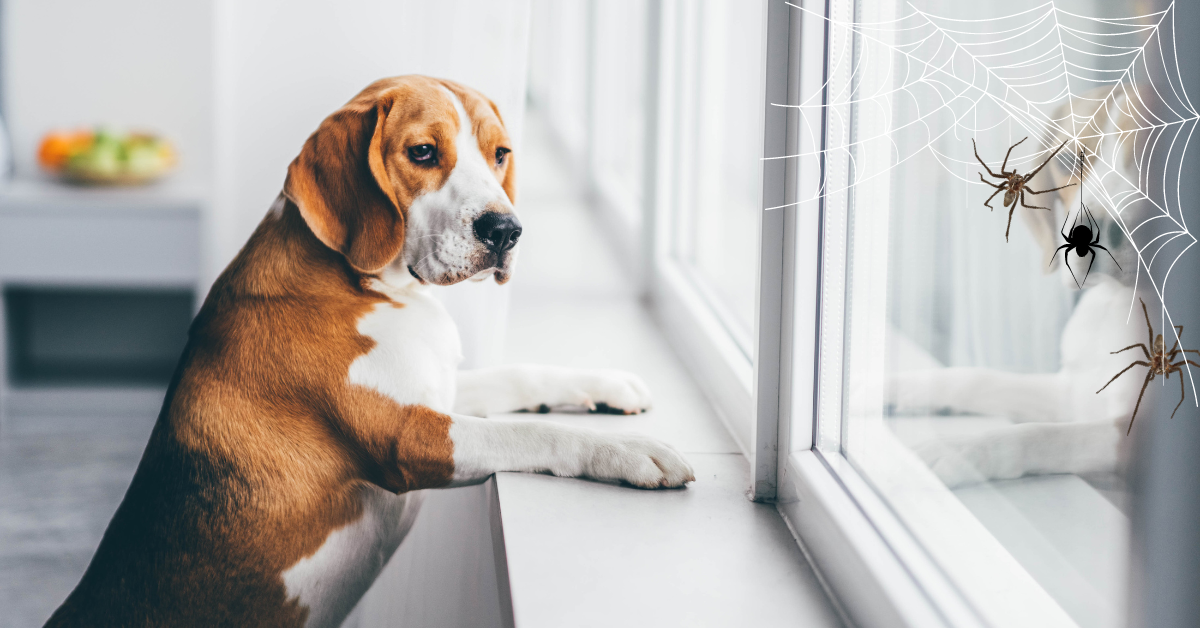
Dogs are interested in anything on the move. No wonder the spiders and other insects inhabiting your yard or garden interest them to the core. They may even be interested in inspecting the web and would end up accidentally ingesting the spider.
2. It’s the Color that Attracts Dogs the Most
Dogs have a limited color spectrum and can identify blue, yellow, gray, and brown. Most spiders may have these colors on their bodies in patches. The yellow sac spider or the black and yellow garden spider has a yellow coloration.
There are numerous brown spiders as well, like the brown recluse, hobo, cellar spider, and so on. These unique colors perhaps attract the dog’s attention instantly when the spiders move about, making them chase after the latter and even devour them at the slightest available opportunity.
3. Your Dog Perceives the Spider as His Plaything
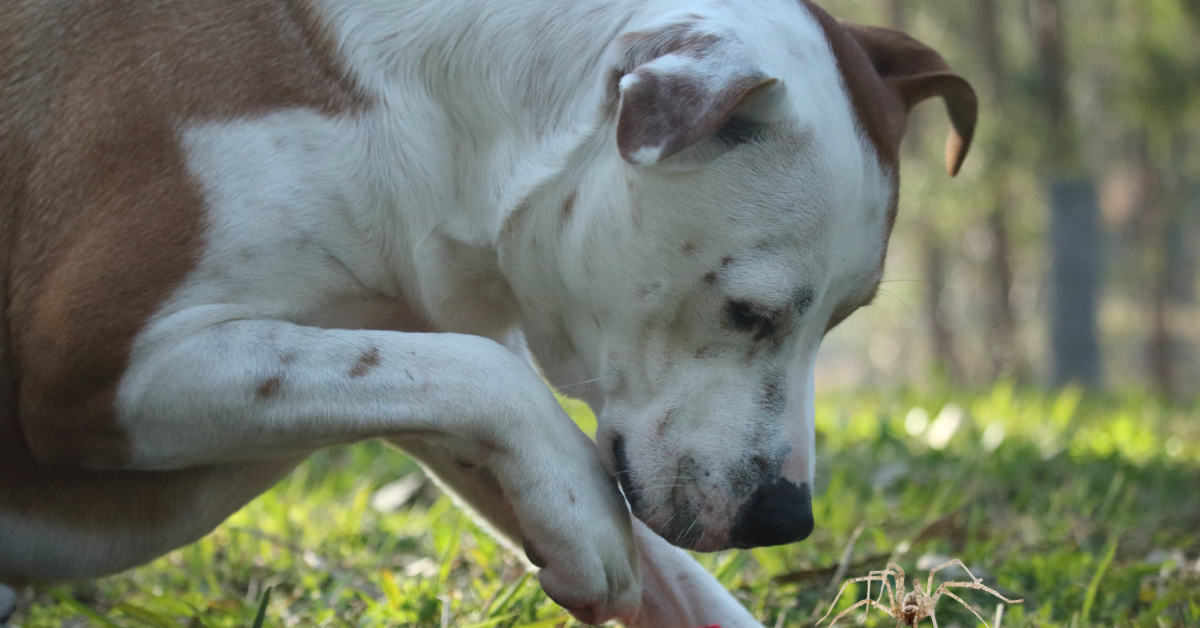
Puppies and adult dogs are always interested in playing with anything at hand. There’s no better playmate than their owners or loved ones. But when there is no one around, dogs know how to entertain themselves. They’ll find out ways to keep themselves busy.
If it’s spider season in the place where you stay, your dog will be enthusiastic about getting hold of these eight-legged wonders and even feasting on them.
How Does Spider Venom Work?
Be it humans, dogs or cats, or other animals, spider venom will work similarly for all of them. The venom could either attack the nervous system directly (neurotoxic) or the tissues around the area of the bite (necrotic).
Some spiders like the Australian funnel-web, Brazilian Wandering spider, and all species of widow spiders have neurotoxic venoms. Whereas species of South African sand spiders and recluse spiders have necrotic venoms. If the venom is in the bloodstream, it will not take time to travel to the heart and brain.
When it comes to your dog, most spider bites aren’t harmful. They may lead to mild symptoms like pain, swelling, itchiness, and redness around the affected area. However, if it’s one of the venomous spiders which have bitten your dog, the consequences could be hazardous.
A similar thing could happen as well if your dog has eaten a venomous spider. Though, ingesting non-venomous spiders wouldn’t be that harmful to your dog.
What Spiders Are Harmful To Dogs?
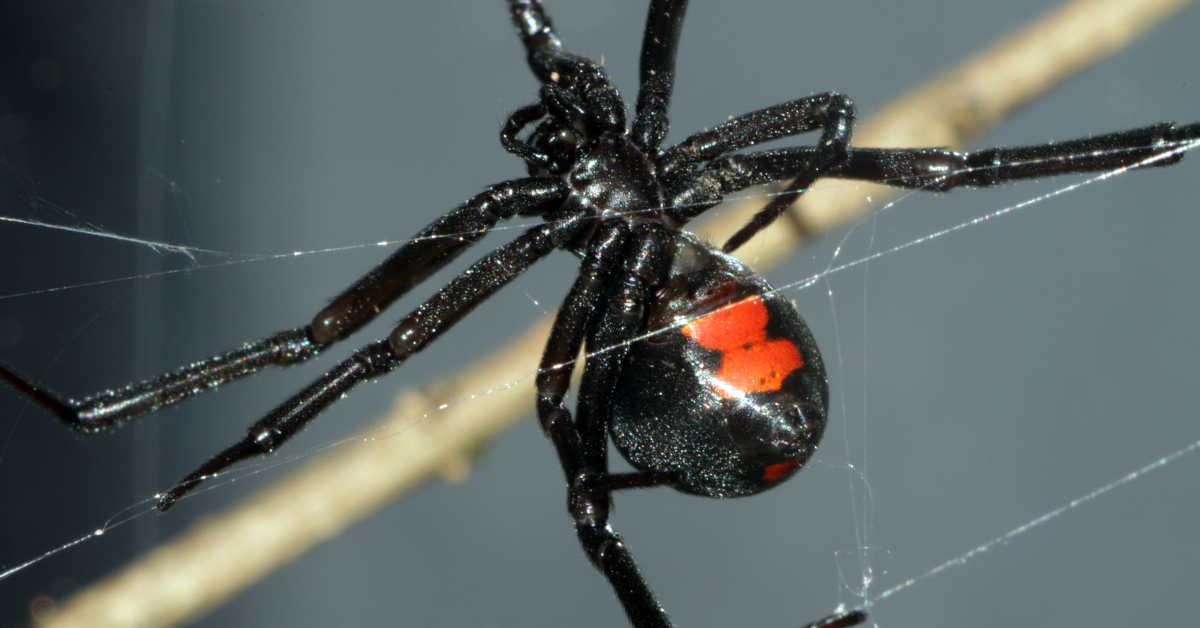
The spiders that are extremely harmful to dogs and can cause severe effects on canines include:
- Widow spiders
- Brown recluse spider
- Wolf spiders
- Brazilian wandering spider
- Yellow-sac spiders
- Redback spiders
Hobo spiders were once considered dangerous to pets and humans. But, at present, their venom is said to have non-toxic effects.
Signs Your Dog Could Be Poisoned
When your dog has been bitten by a poisonous spider or has ingested the same, he could be in trouble. Sometimes the symptoms could show up right away. But it could take anywhere between 2 and 8 hours for the signs to come to prominence.
If your dog has eaten a non-venomous spider, it will be harmless for your canine. Yet it is safe to keep a close watch on your canine for about 24 hours. Here are some of the symptoms to watch out for:
- Nausea (expressed through excessive licking, chewing, drooling, and lessened appetite)
- Vomiting
- Inflammation, irritation, and redness around the affected area
- Excessive drooling
- Swelling around the area of the bite, which also becomes tender to touch
- Fever
- Restlessness and massive changes in your dog’s behavior
- Breathing problem
- Muscle cramps
- Difficulty to walk or stand
Can My Dog Get Sick From Eating A Dead Spider?

If your dog eats a dead spider, then the risk of him getting harmed is less. This is because the dead spider won’t bite the dog. However, if the dead spider was a venomous species, then it could be concerning.
Moreover, there might also be risks if your dog consumed a spider that was killed using a powerful insect killer. You would have to keep a watch on your dog for at least a day. If you see any unusual symptoms, then get in touch with a vet at once.
What To Do If Your Dog Eats A Spider?
When you have seen your dog eating a spider, living or dead, then there are certain things that you need to initiate from your end. Take a look at some of the essential to-do’s:
- If you are aware that your area is home to several venomous spiders, then do not even wait for the symptoms to show up; directly contact the vet.
- When you have identified that your dog hasn’t consumed venomous spiders, then you could monitor his symptoms for 24 hours on average. Yet, for your safety, it’s better to consult a vet.
- Please refrain from using any remedies at home without seeking advice from the vet. You could do more harm to your dog than good.
- Taking him away immediately from the source of where he is eating the spider is extremely important. This will prevent him from eating more of it and doing any damage to himself.
When to Consult Your Vet?
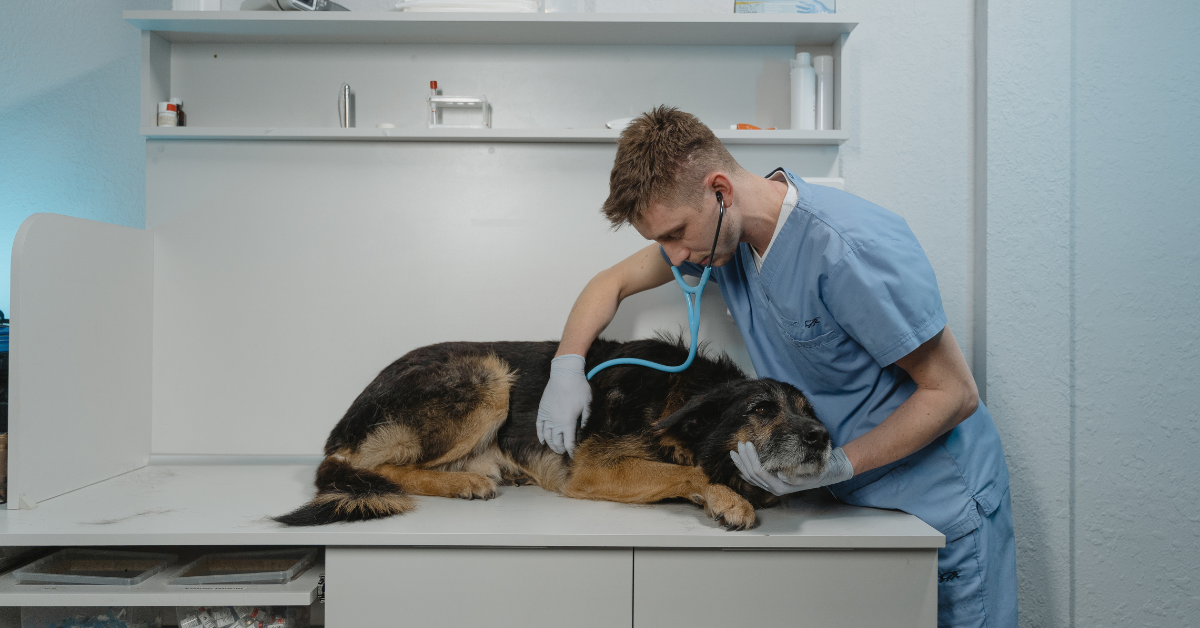
Continuing from the above-mentioned points, it is essential to state that you should contact the vet when your dog shows signs that aren’t normal. He could be restless, vomit excessively, pass loose stools, or even appear breathless.
All these are more likely to happen if he has eaten a living spider that is poisonous. In the case of dead venomous spiders, the risks are comparatively less, as there aren’t chances of the spider biting your dog. Yet, a vet’s consultation is still needed.
FAQ’s
Can dogs die when they eat a venomous spider?
Most of the time, there isn’t much to worry about when your dog has eaten a spider, especially if they are the non-venomous ones. But if it is a highly venomous spider, then there is a risk of your dog eating them.
If he is treated instantly, then your dog will be out of danger at the earliest. But, any delay in treatment could make things worse for your dog and might be life-threatening as well.
What does the vet do when you take a dog bitten by a spider ?
If your dog has been externally bitten by a spider, the vet will thoroughly clean the area surrounding the bite, particularly if there has been any redness, swelling, or inflammation.
If your dog shows signs of infections like vomiting upon ingesting the spider, the vet may prescribe antibiotics. At times, the vet might even prescribe corticosteroids to prevent more damage to your dog’s system.
Which other insects will your dog eat?
Your dog could eat a host of other insects as well, alongside spiders. Some of them that top the list include June bugs, stink bugs, caterpillars, Asian lady beetles, wasps, bees, and so on.
Conclusion
When your dog has eaten a spider, it may surely be a stressful thing for you. But. the need of the hour is to take one thing at a time. You first need to identify if your dog has eaten a venomous or non-venomous spider. Once that is done, you may act accordingly. The easiest way to keep venomous spiders off the boundaries of your home is by spraying a vinegar solution all over the place.
It isn’t harmful to your canine as well. If your dog recurrently eats spiders, then you should keep him away from the areas inhabited by spiders in the spider season, which starts in spring and continues to fall.
Elena Gherman is a highly skilled and knowledgeable animal care expert. At the start of her career, she gained practical expertise with multiple animals. In addition to that, she works as a DVM veterinary editor for Joy Pet Products, which focuses on offering reliable information on pet health and wellbeing. She meticulously reviews each piece of writing before it is published to make sure pet owners get the most precise and updated information possible.
